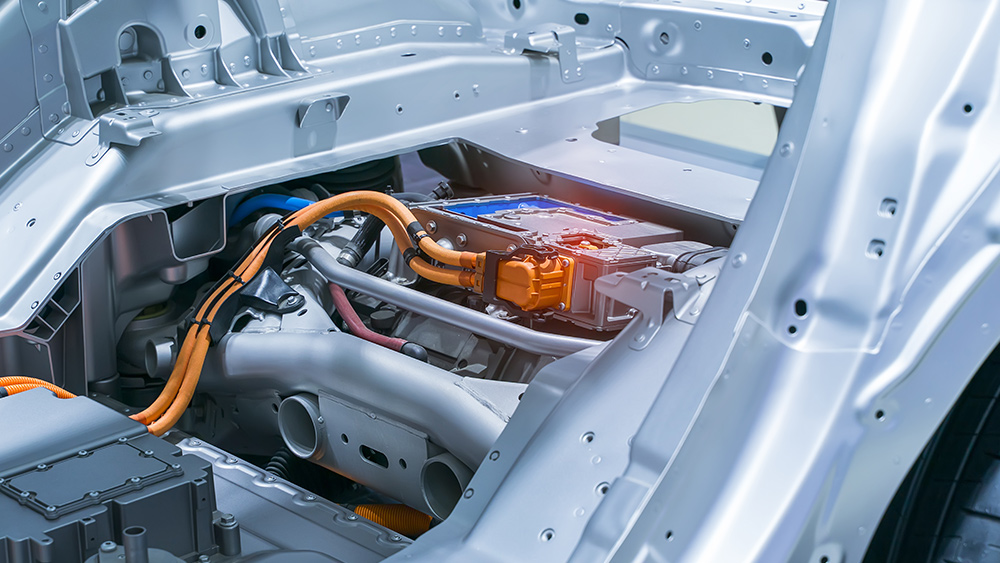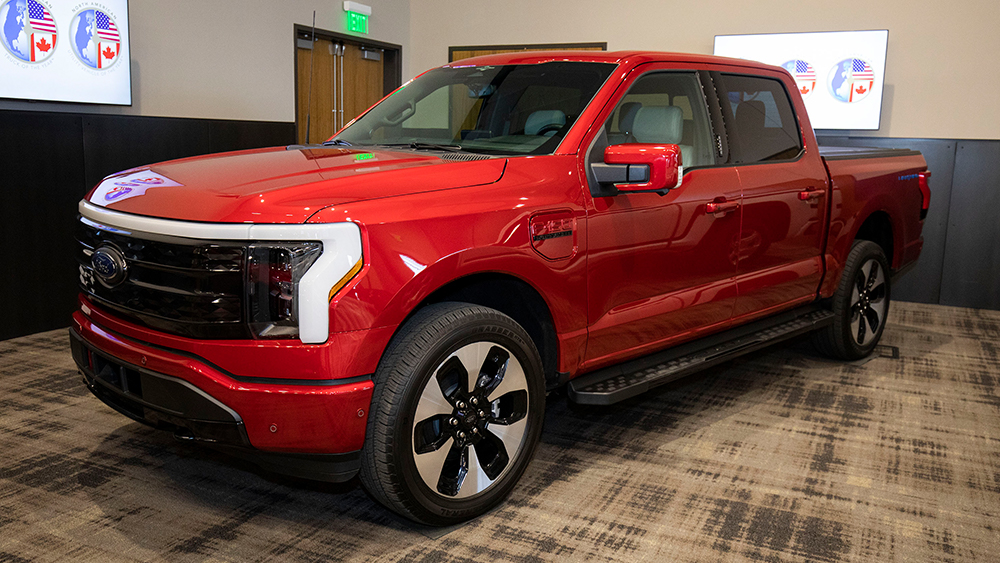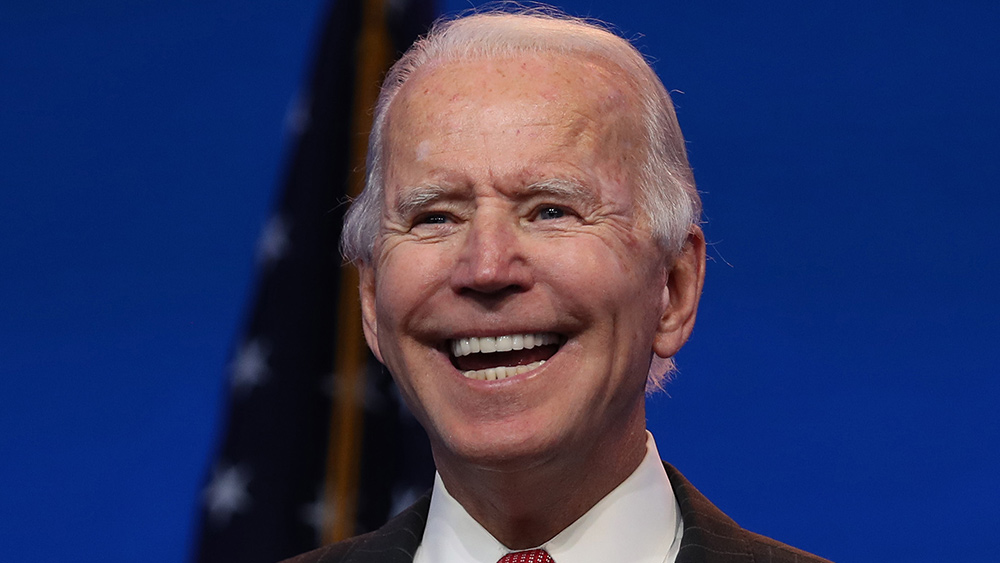Lithium-ion battery pack sizes have increased 10 percent over the last five years, which could lead to battery supply shortages
08/14/2023 / By Laura Harris

Lithium-ion battery pack sizes for the latest electric vehicle (EV) models have grown by 10 percent annually for the past five years, with their range going from 40 kilowatt hours (kWh) to 60 kWh.
In a recent report released by Bloomberg New Energy Finance (BNEF) entitled “Electric Vehicle Outlook,” analysts delved into three different range projections for EV battery demand and their implications for material supply. (Related: Car companies are expanding into the lithium mining business to secure their supplies for EV manufacturing.)
According to the results, BNEF’s baseline projection envisions the stabilization of average EV ranges at approximately 250 to 310 miles with slight deviations based on market segments. In contrast, the growth scenario suggests a more potent increase of EVs from different vehicle categories, projecting a five percent annual rise until 2030.
Conversely, in the declining scenario, average EV ranges are anticipated to contract by two percent per year from 2025 onwards as public charging infrastructure improves and the EV industry becomes more price-competitive.
The analysis, which incorporates historical trends by model, segment and country across major auto markets in the United States, China and Europe, also highlights the influence of improved battery density and vehicle efficiency on battery size requirements. Regardless of the projected scenario, the report notes a slight decrease in the average battery size needed to deliver a specific range due to these technological enhancements.
Based on the report, these advancements in the EV industry have far-reaching consequences on its supply chain. The growth scenario predicts a 50 percent increase in battery demand in 2030 compared to the base case, while the decline scenario anticipates a 70 percent increase in demand.
This growth directly correlates with the demand for EV materials like lithium, which is already on a trajectory of exponential increase in the near future. Interestingly, materials like cobalt, often associated with EV batteries, show relatively less impact due to the growing dominance of lithium-iron phosphate batteries and other formulations that employ reduced amounts of cobalt.
However, the report raises a red flag when it comes to the potential consequences of the high-range-increase scenario. Under this scenario, the lithium market is projected to experience a sharp deficit by 2030, potentially leading to a drastic price surge similar to the events of 2021 and 2022. Additionally, the supply of nickel, another vital component in EV batteries, appears to face significant challenges under the higher-range scenario.
Desire to keep extending EV range contributing to imminent battery supply shortages
The rapid and unchecked increase in EV range could lead to potential battery supply shortages if the trend continues unabated.
Based on the 2018 to 2022 data, the global average range of fully electric vehicle models surged from 143 miles to 210 miles. However, this upward trajectory is worsened by the growing preference for larger, heavier EVs and the surge in long-distance driving.
The expansion of electric pickups further fuels the demand for higher-capacity battery packs and extended EV range. The upcoming releases of the latest electric pickup models such as the Ford F-150 Lightning, Chevy Silverado EV, RAM 1500 REV, Hummer and Tesla’s Cybertruck contribute to this rising demand.
For instance, Chevrolet Silverado, an electric pickup manufactured by General Motors, comes with an impressive range of 400 to 450 miles, weighing in at over 8,000 pounds and an acceleration of zero to 60 miles per hour in just 4.5 seconds. This monster truck reveals the gradual increase in the average range of electric vehicles.
According to BNEF, most premium electric vehicles and larger electric utility vehicles now feature battery packs of 100 kWh or more. This trend, with battery packs exceeding 100 kWh, becomes the new norm in larger vehicles.
While acknowledging the desire of the consumer for the extended range is valid, the BNEF questioned the scarcity of public charging infrastructure, which intensifies the apprehensions of drivers regarding EV range limitations. BNEF noted that allowing individual consumers to over-purchase a range beyond their needs is inefficient.
Learn more about electric vehicles at RoboCars.news.
Watch this video from auto guru and commentator Tyler Hoover as he demonstrates the F-150 Lightning EV pickup’s abysmal towing capabilities.
This video is from the Daily Videos channel on Brighteon.com.
More related stories:
EV supply chain problems drive GM to build “green” battery packs for electric cars BY HAND.
GREEN SHORTAGE: Lack of lithium preventing Indonesia from becoming a global hub for EVs.
Tesla to expand lithium refining capacity to meet growing demand for EV batteries.
EV owners complain about “logistical nightmare” caused by lack of charging stations.
Sources include:
Submit a correction >>
Tagged Under:
battery, car batteries, electric cars, electric vehicles, energy supply, EVs, flying cars, fuel supply, future tech, green living, Green New Deal, lithium, lithium ion batteries, metals, products, rationing, robocars, scarcity, supply chain
This article may contain statements that reflect the opinion of the author
RECENT NEWS & ARTICLES
COPYRIGHT © 2017 POWER NEWS



















